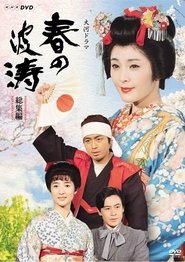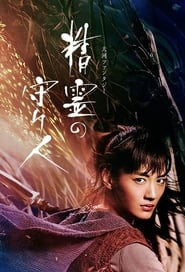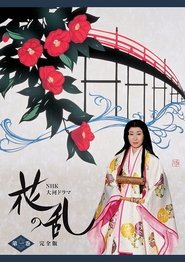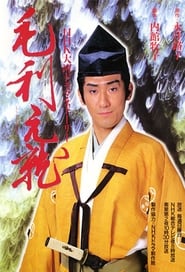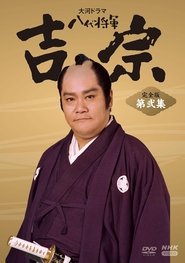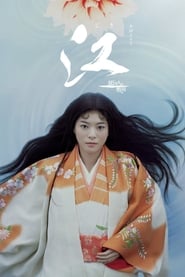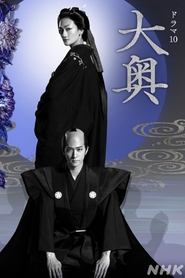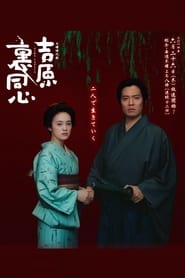Nhk TV Series - Page 7
-
Atom: The Beginning
2017
star 5.2Japan in the near future suffers an unexplained major disaster. Five years later, reconstruction is well underway. Two young researchers at a university are pinning all their hopes on robot development. Now their new interpretation of the eternal hero Astro Boy up until his birth is just about to start! -
Seasoning the Seasons
2012
star 10This program visits places across Japan to introduce the charms of their local daily life and festivals fostered by the nation's long history. -
Waves of Spring
1985
Waves of Spring
1985
-
Moribito: Guardian of the Spirit
2016
star 7.6The heroine Balsa is a skilled bodyguard and a masterful spear-wielder. One day she rescues Prince Chagum who has fallen into a river. The prince is carrying a mysterious spirit egg in his body, and is in danger of being assassinated by his father, the Mikado, who fears this will damage his imperial prestige. Balsa embarks upon a perilous journey when she accepts the queen’s plead to protect her son from her husband. -
The Silk Road
1980
The Silk Road
1980
-
100CAM
2018
100CAM
2018
The program sets up 100 small cameras in a specific location to capture the natural, unguarded expressions and daily lives of the people present. This approach allows viewers to glimpse authentic moments and interactions without the subjects being overly conscious of the cameras. -
NHKスペシャル 未解決事件
2011
NHKスペシャル 未解決事件
2011
-
Hana no Ran
1994
Hana no Ran
1994
The story takes place during the Muromachi period of Ancient Japan, in the midst of the Ōnin War. The main character in the series is Tomiko Hino, a historical figure with a bad reputation because of her actions to rebuild Kyoto after the Ōnin War. -
Mouri Motonari
1997
Mouri Motonari
1997
The 36th NHK Taiga Drama is Mori Motonari. This series chronicles the life of Mori Motonari, a warlord of the early 1500s who stood at the vanguard of the Warring States era. All Japanese school textbooks contain the Mitsuya no kyokun, Mori's famous lesson to his three sons that teaches that while one arrow is easily broken, three arrows together cannot be broken. In 1997, 500 years after his birth, NHK dramatizes Motonari's rise from a chief of the region of Aki (now Hiroshima) to a daimyo who rules over ten provinces of the Chugoku region. Motonari was 64 years old and already the patriarch of a powerful dynasty about the time Oda Nobunaga and Takeda Shingen appeared on the scene. And even after his death, the Mori family figured prominently in Japanese history. His grandson Terumoto became a loyal Toyotomi vassal. Defeated at the Battle of Sekigahara, Ieyasu confiscated most of his lands, leaving him only with Suwo and Nagato, later known as Choshu. But 260 years later, the Mori got their ultimate revenge, leadi -
Eighth Shogun Yoshimune
1995
The drama is depicting the life and times in 17th and 18th century Japan during the rule of the eighth shogun, Tokugawa Yoshimune. -
Princess Go
2011
star 8.3Princess Go was the youngest of the most famous three sisters in Japanese history, who each led a remarkable life in an age of turmoil and civil war. Go loses her parents in the war, marries three times, and feuds with her own sister in competing for power. Go's husband becomes the second Tokugawa Shogun and she ensures her prominence as she gives birth to a son who later becomes the third Shogun and a daughter, a wife of the Emperor. The drama describes the age of the civil war through the eyes of Princess Go, who plays a significant part in establishing the age of peace that lasts over 200 years in Japan. -
NHK Special
1989
star 8An NHK flagship program, centered around a diverse range of documentaries, delves into the dynamic shifts of society, politics and history, as well as the breathtaking wonders of the natural world. -
Ooku: The Inner Chambers
2023
star 8.2In an alternative feudal Japan, a strange disease that only affects males caused a massive population reduction, leaving females to fill the vacant jobs, therefore changing the social structure. Now, 80 years after the initial outbreak with a 1:4 male:female ratio, Japan is a completely matriarchal society. Females hold all important political positions, and males are their consorts. Only the most powerful female—head of Tokugawa shogunate—may keep a harem of handsome and unproductive males, known as "Ōoku". -
Graduation Time Limit
2022
A popular English teacher, Mizuguchi Risako has been kidnapped three days before the high school's graduation ceremony. Four high school seniors received a mysterious challenge letter, asking them to solve the mystery of the kidnapping case within 72 hours. The four students are Kurokawa Yoshiki, his childhood friend Takahata Ayane, sports all-rounder Ogita Junpei, and school's beauty contest winner Komatsu Mio. The four students were wondering why they're the only ones who received the letter, but later gradually found out the "other face" of Mizuguchi which she has been hiding. -
Sushi and Beyond
2015
star 8It's follows the story of Booth, his wife Lissen, and two kids Ansger and Emil, on their 100-day trip to Japan as they try a wide variety of Japanese foods. Booth was inspired to make the trip by Shizuo Tsuji's book, Japanese Cooking, A Simple Art. -
Daisy Luck
2018
star 6Kaede (Nozomi Sasaki), Kaoru (Natsuna Watanabe), Michiru (Shoko Nakagawa) and Emi (Eri Tokunaga) are childhood friends. The four women meet again on Emi's wedding day. But on that day, the company Kaede works for goes bankrupt and her boyfriend dumps her. She is about to turn 30-years-old. Kaede decides to follow her childhood dream and become a baker. She gets a job at bakery, but making bread is not easy and the senior baker is strict. Meanwhile, Kaoru work at a luxurious massage salon. Michiru makes handbags, but she is poor. Emi is experiencing newlywed life. What will tomorrow hold for these women? -
Hometown Stories
2011
Hometown Stories
2011
Stories about people, stories about life. Intimate portraits of people from around Japan, each leading diverse lives while enriching lives of others. -
Tokusatsu GaGaGa
2019
star 7.1The series is based on the manga Tokusatsu Gagaga, a comedy manga by Tanba Niwa. Tokusatsu Gagaga series follows Kano Nakamura, an office lady played by Fuka Koshiba, who is secretly a tokusatsu otaku, a toku-ota. She lives her life by the code of tokusatsu heroes and often envisions herself as one as a means to make it through her daily struggles.


